https://www.youtube.com/watch?feature=player_embedded&v=jNoiDUxVar8
Good day to all attendants, thanks to Dr. Royo and his team.
For those who do not know me, I would like to introduce myself. I am Dr. Francesco Crocè, general practitioner and specialist for diseases of the respiratory system.
I am here to tell you about my experience as a doctor-patient, before and after the sectioning of the filum terminale surgery.
Beforehand, I would like to say the following as an important introduction: my account won´t be of medical nature, but simply the account of my clinical and personal history, as the medical-scientific part is obviously Dr. Royo´s responsibility.
To start, I would like to give you the definition for the Arnold Chiari I Syndrome or malformation, which is a neurological condition where one part of the cerebellum (the cerebellar tonsils) descends lower than the skull base (by more than 5mm) and enters the spinal channel. The result is a compression of the cerebellum and the spinal cord, it hinders the normal flow of the cerebrospinal fluid, a liquid that moves around the brain and the spinal cord.
The other, less understandable, definition is that it is a pathology of the paraxial mesoderm, caused by the hypo-development of the posterior cranial fossa (but we know that this is not always the case) which provokes an impactation in the area of the normally developed rhombencephalon and the downwards dislocation of the cerebellar tonsils.
It is of unknown etiology.
AC1 has a prevalence estimated at a range of between 1 case per 1000 people to 1 case per 5000 people. Family transmission may intervene through autosomal recessive inheritance factors or autosomal dominant inheritance factors with incomplete penetration, but in the majority of cases it occurs sporadically.
The filum terminale derives from the union of membranes that cover the spinal cord, connected at the end of the vertebral channel. From the fifth week of life of the embryo, those membranes join with each other together wit the final part of the atrophied spinal cord, which would be correspondent to our primitive tail.
The filum terminale does not have any function in the adult person.
Syringomyelia is a neurological condition where a cavity filled with fluid, “syrinx, in the form of a flute”, develops within the spinal cord.
This cavity can increase over time, causing the spinal cord to expand and stretching the nervous tissue until provoking permanent damage to the nerves or even paralysis.
It is believed that SM is not a disease as such, but the consequence of something else.
The most common cause is without doubt AC1. It has been estimated that 30 to 50% of AC1 patients, I would say even more, also suffer from SM, and in those cases where there has been no diagnosis of a classic AC1, the existence of compression at craniocervical level has been observed. Nevertheless, it can also develop due to a spinal cord trauma, because of a traffic accident or a fall (posttraumatic) showing just months, or years later.
SM can also be a consequence of a tumor or spinal channel stenosis due to different causes.
Scoliosis is a deformity that acts over the spinal column until bending it laterally in a fix and permanent way, causing anatomic alterations that cannot be shaped freely.
Such a curvature is also accompanied by torsion of the spine on its own axis, which involves, apart from the dorsal spine, the joints, the ligaments, the paravertebral musculature and, in the worst cases, internal organs, for example, the cardio respiratory ones, and the viscera, consequently causing functional problems additionally to aesthetic problems.
I want to promptly avoid misunderstandings that could turn out to be dangerous. One thing is scoliosis as dysmorphia or structural permanent deformation of the spine, which is clearly visible on x-ray images. Another thing is postural scoliosis, also called paramorphism, which simply consists of a bad posture that does not involve any permanent deformity, even though it does condition a lateral curvature of the spine, which can be corrected by voluntary exercises.
The most common kind is the primary or idiopathic scoliosis, it affects between 2 to 4 per 1000 people. It is an illness with a speedy development that develops in the course of pubescence up to skeletal maturity, when adolescents go through the period of most growth in height:
From 11 to 15 years in girls
From 13 to 17 years in boys
And it stops when the activity of the cartilage of the bodies of the vertebras ceases, becoming stable once the adult age has been reached. It affects specially slender and asthenic individuals and girls at the age of ten are ten times more at risk than boys.
According to recent studies, it appears to be confirmed that scoliosis has a genetic-hereditary based origin and that concomitant factors of hormonal, biochemical, biomechanical and neuromuscular kind may contribute to its causes, which do in fact remain unknown.
What is certain is that the possibility that the child of a scoliotic mother develops the pathology is 10 times higher compared to an individual with a normal mother.
Our capacity to understand illness and to influence the results is always limited, despite of all our knowledge in the medical field.
My story begins on 20th May 2007 when I noticed a pain in the left shoulder at the end of a football match, to be precise in between the scapula and the vertebral column.
I believe that this was the beginning of the symptoms of the illness that was probably triggered by fall that provoked a craniovertebral trauma six months earlier, something very common in many other AC1 patients.
In the believe that I was dealing with a muscular pain I followed a therapy with painkillers and cortisone, without obtaining any results, on the contrary, the pain was getting stronger, I would say, almost disabling, but fortunately it had the characteristic that it disappeared when I adopted the supine position.
Then I decided to get a cervical MRI (thinking of a cervical herniated disc).
The diagnosis was a different one, the MRI showed a descent of the cerebellar tonsils of 5-6mm, a small syringomyelic cavity at C5-C6 and right-sided cervical herniated disc C5-C6. I point out right-sided, because this caused diagnostic confusion since I was experiencing pain in the left side.
After the AC1 and syringomyelia diagnosis the search for a medical solution began, as is probably common in many patients, I started to consult different neurologist, orthopaedist and neurosurgeon colleagues. What they suggested (not all of them) was the decompression surgery.
Over the last thirty years we have learned to actively participate in our health and welfare issues, to appreciate them on a scale unthinkable for earlier generations that limited themselves to accept what the doctor would say without questioning his judgment.
Nowadays, on the contrary, Internet allows us to question the universally accepted. After months of physical and psychological suffering I discovered, on the Internet, that at the Institut Neurològic de Barcelona Dr. Royo performed a minimally invasive surgery (sectioning of the filum terminale) for AC1 and syringomyelia.
Dr. Royo´s explanation about the cause of the pathologies AC1, syringomyelia and scoliosis was convincing for me.
Thanks to Internet luckily I also got to know Mrs. Rita Presbulgo, who had been operated on by Dr. Royo one year before. Rita, an extraordinary person, wanted to give testimony to the success of the surgery and the benefits she had received from it, and thanks to her help I convinced myself even more to go to Barcelona.
The clinical picture stated scapular pain radiated to the upper left extremity, pain and numbness in the lower extremities, occasionally fasciculation´s in the pectoral muscle, tinnitus, decrease the strength in upper right extremity, nystagmus, mental confusion, nocturnal apnea.
This was obviously my personal case, and those symptoms do not appear in all patients, most of you will know, unfortunately, that often for these pathologies more than 50 symptoms can be identified, and obviously it is not known why there can be totally different symptoms with the same MRI situation.
Certainly there are some symptoms that are more frequent than others, but that doesn´t allow us to make a diagnosis; additionally, what confuses even more is the fact that it is important to keep in mind that on symptomatological scale a patient who´s health is affected, for example by Chiari, is prone to developing secondary problems, especially if he/she suffers from chronic pains.
Research shows that people who suffer from chronic pains tend to develop other chronic pains, so that not all symptoms can come from the Arnold Chiari 1 Malformation.
Something that still has not been understood, still regarding symptoms, is that there is no correlation between how much the cerebellar tonsils descend and the clinical symptoms.
Some people with a descent or herniation of the tonsils of less than 3mm have a lot of symptoms, and serious ones, whilst others have a much bigger descent and are practically asymptomatic. Probably the fact if the tonsils block or reduce the flow of the cerebrospinal fluid or not, or the scale and the time in which the medullary traction has determined a central cord ischemia is more important.
Scientifically there is no objective examination that could attribute a patient´s problems to AC1. Anyway, after speaking with Dr. Royo I was convinced that my symptomatology could be related to a medullary traction syndrome, and I decided to undergo the surgery.
There is something that made me take this decision above all other things, and that was the fact that this kind of surgery is completely free of risk.
In the immediate post-operative period, I remember that those who noticed it most were those accompanying me (my wife and my dear friend – iust like a brother- Dr. Francesco Polimeni): the look of my face, it was definitely more relaxed, and with a different colour than the day before.
Another important thing was the unbelievable recovery of strength in the upper right extremity, as well as the notable ease of the left-sided brachialgia.
To be honest, I found it hard to believe that in I should have been able to experience such a speedy recovery of the strength in the upper right extremity, but that´s how it was.
In the clinical control one month afterwards I had recovered my strength almost completely, and the pain kept on diminishing (it disappeared 5-6 months after the surgery); today I sometimes still have the tinnitus even though less intense, stiffening in the lower extremities, especially in the calves. Another important symptom to disappear was the nocturnal apnea, and at the same time I did no longer have episodes of cardiac arrythmia, an episode had been confirmed still some months after the discovery of the pathology and for which I did not find a scientific explanation. Now I know that it were the nocturnal apneas that caused the extrasystoles.
Regarding the extrasystoles I would like to recall that there are a number of “red flag symptoms” that do not allow us to postpone surgery and that are:
Serious cardiac arrythmia
Swollowing difficulties specially when ingesting fluids
Untreatable nauseas
“Drop attacks” – falls due to failure of the legs
I can now, four years after surgery, confirm with clinical and radiological certainty that the sectioning of the filum terminale has undoubtedly blocked the development of the illness.
Symptoms like fierce pain in the left shoulder, nocturnal apneas, have disappeared, the tinnitus has decreased in intensity, and the nystagmus has decreased and almost disappeared. The numbness in the lower extremities does still persist; it´s a rather sporadic pain in the calves, but anyhow it does not impede that I go to the gym or even play football, on the contrary, oddly, this discomfort disappears after physical activity.
I can confirm that the surgery has blocked the evolution of the pathology because the MRIs that I have done each year have shown a possible rise of the cerebellar tonsils and a rise of the medullary cone, which is now to be found in between L1 and L2, whilst in 2007 it was in the upper third of L2. The discopathy D7-D8 and D8-D9 have disappeared. Discopathy C6-C7 and D9-D10 do still persist.
Beyond the details, there has certainly been no deterioration of the radiological situation, and this as such is already an excellent result.
Despite the clinical and radiological evidence I still find myself faced with sceptical neurosurgeons, except for a few, luckily. I obviously refer to my personal experience that illustrates the difficulties of the patients that I listen to over the telephone and that ask me for clarifications regarding this pathology.
I put myself in the shoes of other patients, I understand their financial as well as personal difficulties, and unfortunately there are many that cannot overcome them and have to renounce to the surgery, reducing their very quality of life.
This is why, four years after the surgery, I always remind myself of everything good that I have received from Dr. Royo, and give information sharing my personal experience as a patient with all those that contact me, helping them in every way I can so that they do not get confused and can take their own decisions.
And it is a great joy to know that those who suffered from so many problems related to the Chiari before the surgery, who contacted me in despair and confused, do now enjoy an excellent state of physical and psychological health, and are ready fight for and conquer the rights that correspond to them, that every patient has to make use of.
I would like to point out that other patients affected by this pathology and I have become to be companions in the adventure, and this creates a whole lot of solidarity between us.
Here we have got a wonderful and unbelievable aspect to the “patient world”, something that you only learn to get to know when you become one of them.
Through this experience I have paradoxically found real life, a reality in which the most authentic feelings appear; you cannot lie to yourself nor to the others, we find ourselves confronted with our limits and our interior strength and we support each other mutually with what unites us, which is the consciousness of the disease that changes us forever opening up another dimension to life. In a way, one gets born again and feels almost superior compared to healthy people.
On my path as a patient I have gotten to know wonderful people, who give life to initiatives and associations, additionally to their personal contribution, and who have found to understanding themselves and others through suffering.
Allow me also express my sentiments of appreciation and affection that I hold for Dr. Royo and his team, for the assistance and the timeliness with which they cared for me.
Anyway, there remains one question that I do not know how to answer definitively, and it is the following: how is it possible to doubt between opening the skull with the related risks (death, paralysis) or a simple cut at the height of the coccyx?
The answer is probably to be found in the fact that my colleagues remain sceptical even in the light of the clinical and radiological evidence, and this – it´s a pity- gets transmitted to the patients.
Of course, there is a difficulty with the diagnosis because the anomaly of the tight filum terminale is not always visible on the MRI, except for few cases where the fat mark allows us to demonstrate it, so the diagnosis are made on the base of the symptomatology and the conventional urodynamic tests.
Probably, once we will have more sophisticated magnetic resonance machines in order to be able to distinguish even the smallest anomalies of the filum, the diagnosis will be clear, for example, if we can single out a filum with a transversal diameter smaller than one millimeter, with other words with superior range than the current MRI resolution, or if we can even measure the level of traction.
The financial part is surely one of the most difficult obstacles to overcome. For this reason I hope that our association AISACSISCO will be able to collect funds in order to help those in need.
I hope to have spoken clearly. Thanks everybody for your kind attention.
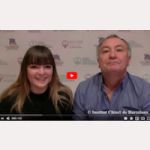
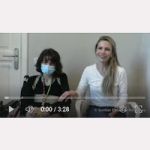
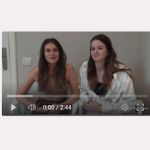
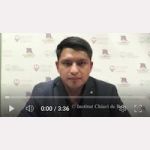
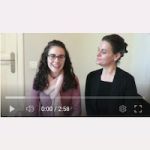
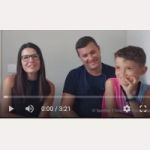

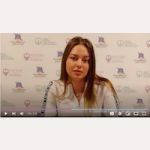

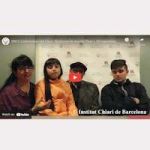
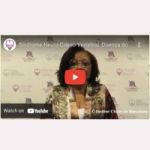

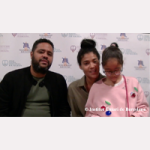
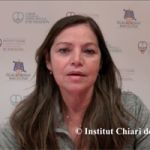

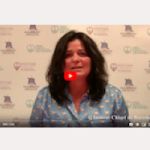
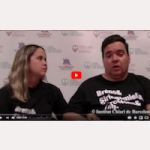
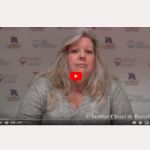
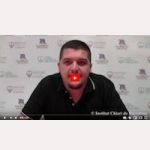

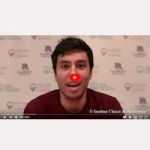
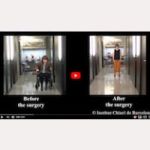
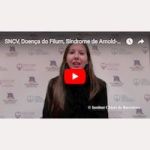
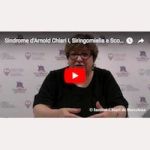
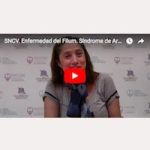
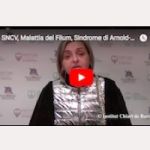
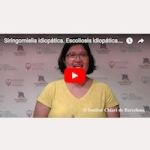
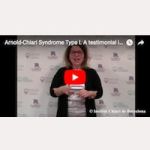

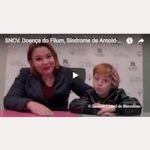
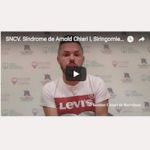

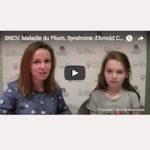
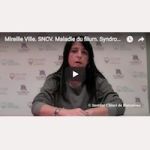
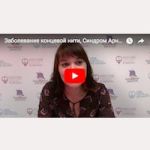
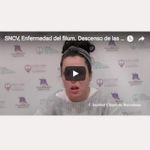
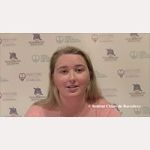
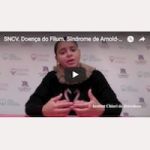
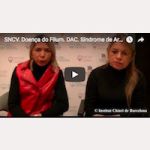

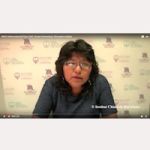
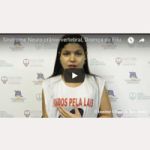

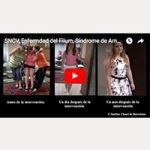

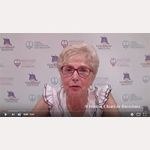
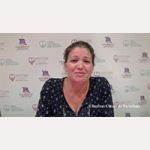
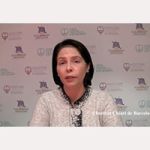
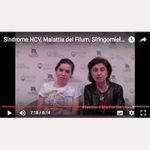
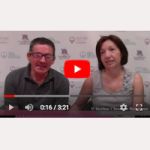
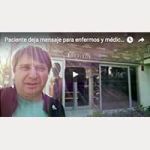
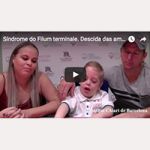
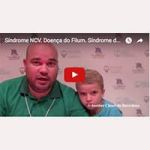
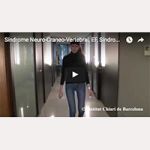

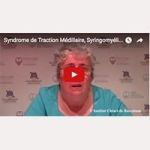

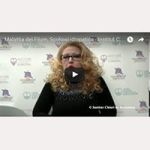
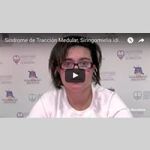
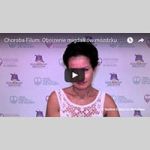
 From an early age she had occasional headaches, very spaced out, especially if she felt hot. During 2020, when she was 10 years old and during the lockdown, at night she suffered more and more frequently episodes of anxiety and confusion, strange thoughts, severe headaches, nausea and insomnia. She was always a very active girl, extremely cheerful and affectionate and that baffled us.
From an early age she had occasional headaches, very spaced out, especially if she felt hot. During 2020, when she was 10 years old and during the lockdown, at night she suffered more and more frequently episodes of anxiety and confusion, strange thoughts, severe headaches, nausea and insomnia. She was always a very active girl, extremely cheerful and affectionate and that baffled us.
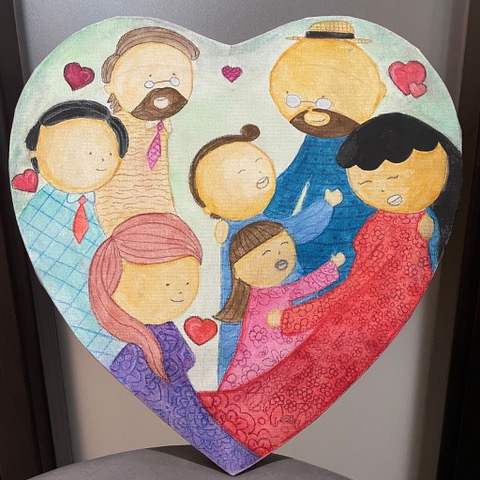 We would never have had the courage to make such a decision without Safaa El Idrissi who answered all our questions quickly and in detail and gave us all the help we needed at each moment.
We would never have had the courage to make such a decision without Safaa El Idrissi who answered all our questions quickly and in detail and gave us all the help we needed at each moment.

